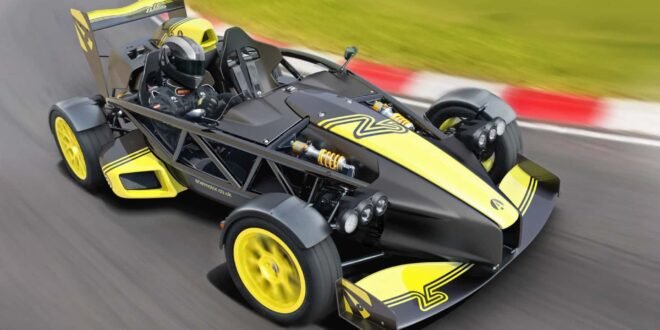The Ariel Atom 4RR: A UTV Reimagined for Track-Day Supremacy
The Ariel Atom 4RR is a unique blend of performance and absurdity, designed to push the boundaries of what a vehicle can be. While it may technically be classified as a road-legal, track-focused supercar-killer, its design and functionality clearly align with the spirit of an off-road utility vehicle (UTV). With no roof, no doors, and an exposed tubular frame, the 4RR embodies the rugged, no-nonsense attitude typically associated with UTVs—just without the mud tires and camo wrap.
Built to celebrate 25 years of automotive madness, the 4RR represents the pinnacle of Ariel’s engineering prowess. It takes the already extreme Atom 4R and elevates it to a new level of intensity. At the heart of this machine is a specially developed version of Honda’s K20C1 turbocharged 2.0-liter four-cylinder engine, sourced from the Civic Type R. However, Ariel didn’t stop at simply installing the engine. They enhanced it with new fuel and oil systems, improved cooling, and additional modifications to deliver an impressive 525 horsepower and 406 pound-feet of torque. This is over 100 horsepower more than the 4R, making it a power-packed beast that outperforms most UTVs by a significant margin.
Weighing in at just under 650kg, the 4RR is a featherweight rocket ship. This weight is comparable to that of a large side-by-side UTV, but the difference lies in its performance. The 4RR can reach 60 miles per hour in around 2.5 seconds, easily outpacing most supercars and even your friend’s turbo RZR on paddle tires. In essence, the 4RR is a UTV that has taken a detour from the dirt trail and embraced the track with unrelenting enthusiasm.
Suspension and Braking Systems: Beyond UTV Standards
What sets the 4RR apart from typical UTVs is its advanced suspension system. Unlike the long-travel shocks and trailing arms found in many UTVs, the 4RR features pushrod-actuated Bilstein dampers with inboard springs at the front, similar to those used in high-end formula cars. The rear also employs a similar setup, finely tuned for maximum grip on the track. For those accustomed to softer, bouncy off-road suspensions, this will feel like being strapped to a surgical instrument.
Braking performance is equally impressive. The 4RR comes standard with Alcon four-piston calipers and ventilated discs, components typically found on GT race cars. In contrast, many UTVs are equipped with dual-piston front calipers and a single rear disc that often fades after just a few minutes of downhill use. The 4RR’s braking system ensures it can handle the intense demands of track driving, making it far removed from the typical UTV.
Technology and Simplicity: A Perfect Balance
The 4RR also boasts real technological advancements. It includes launch control, adjustable traction control, and a limited-slip differential to help manage its immense power effectively. The digital dash is motorsport-grade and highly configurable, while the switchgear remains refreshingly analog with knobs and buttons where needed. There is no infotainment system or Apple CarPlay, which is a deliberate choice to keep the focus on performance rather than convenience.
Despite its high-performance credentials, the 4RR is not a practical vehicle. It doesn’t do dirt, can’t tow anything, and lacks cupholders for your sports drink. But that’s not the point. The 4RR is a barebones thrill ride, engineered for lap times and the sheer joy of speed. It’s a vehicle that thrives on track-day hedonism and the occasional show-off moment.
Limited Production and Exclusive Appeal
Only 25 units of the 4RR will be produced, adding to its exclusivity. While pricing details are still pending, it’s clear that this machine is tailored for enthusiasts who seek the ultimate driving experience. If you’re the type of person who browses Bring a Trailer and dreams of a faster garage-mate, the 4RR might just be your dream vehicle. Imagine a UTV that can casually lap Ferraris on the track.
In conclusion, the Ariel Atom 4RR redefines what a UTV can be. It’s a vehicle that took a wrong turn at the dirt trail and ended up breaking Nürburgring records. And honestly, we wouldn’t have it any other way.
 Info Malang Raya Its All About World News
Info Malang Raya Its All About World News




